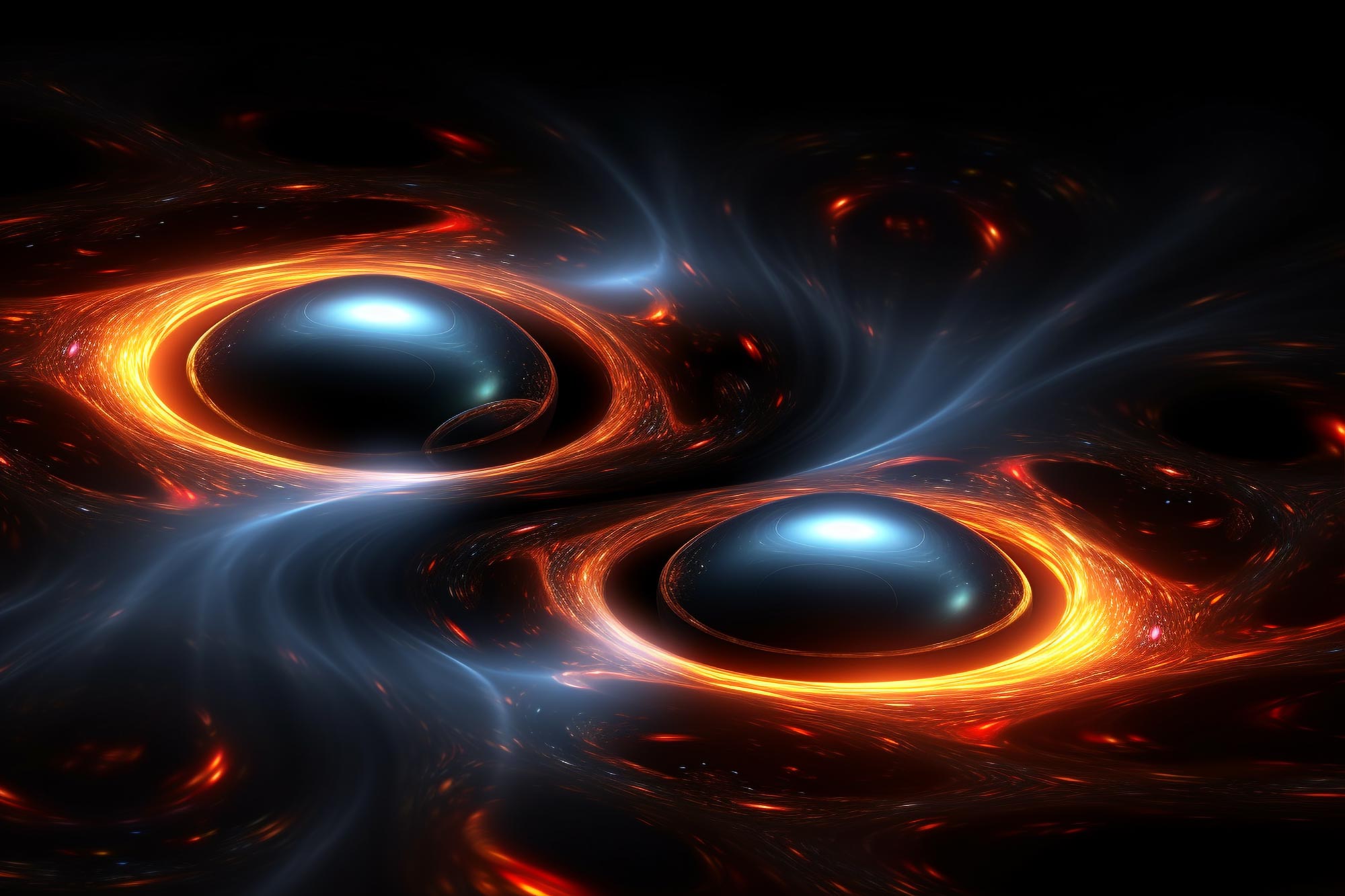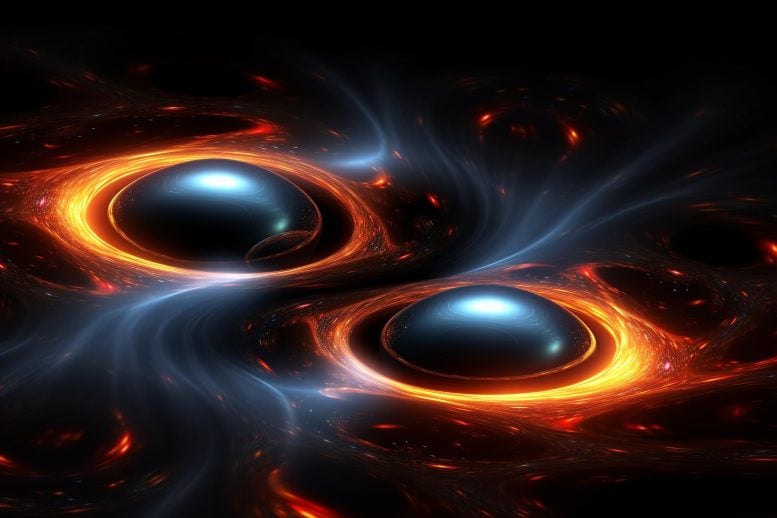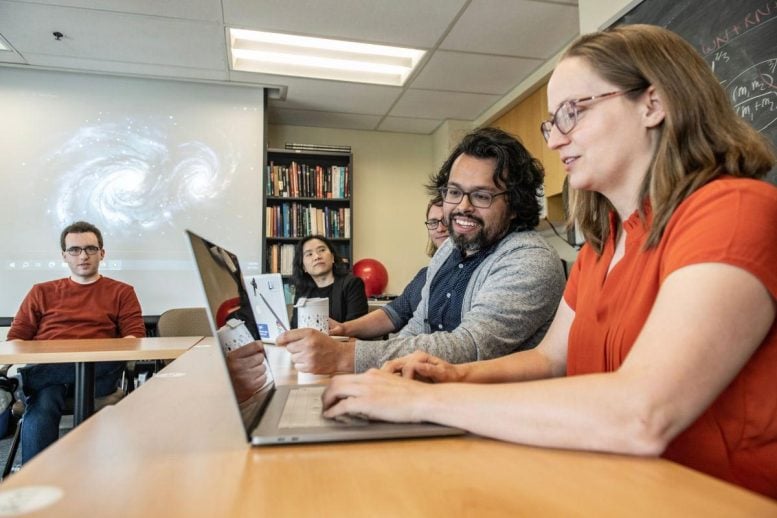

Using radio pulsars, WVU’s Emmanuel Fonseca is pioneering the detection of gravitational waves, aiming to reveal insights into neutron stars and the fabric of the universe. His work, supported by substantial NSF funding, merges traditional astronomy with advanced technologies.
A researcher at West Virginia University’s Center for Gravitational Waves and Cosmology is unveiling an invisible universe of gravitational radiation distorting the spacetime continuum.
Emmanuel Fonseca, an assistant professor of astronomy at the WVU Eberly College of Arts and Sciences, uses precisely timed signals from stars called “radio pulsars” to detect gravitational waves. These waves, generated when massive objects like stars or black holes pick up speed, contain information about phenomena and objects in distant galaxies and could reveal how matter behaves inside neutron stars.
The study is supported by a $416,000 grant from the National Science Foundation.
Breakthroughs in Gravitational Wave Research
“Gravitational waves permeate everything — the solar system, Earth, us — but only in the past five to eight years have we been able to detect them,” Fonseca said. “They’re a unique window into the universe, distinct from electromagnetic radiation like light, X-rays, ultraviolet. Those forms of radiation are generated by charged particles, while gravitational waves are caused by objects accelerating in space and perturbing space-time.”
According to Fonseca, “all the supermassive black holes in binary systems in the universe are throwing waves at us. The sum impact of those signals is a wobbly, seemingly random pattern called ‘gravitational-wave background.’ As this research improves our sensitivity to that background, we’ll become more sensitive to gravitational waves emanating from galaxies nearby. Once we’ve found local sources of gravitational waves, we can point electromagnetic telescopes toward them and begin to make sense of things, and that will really be fun.”

Pioneering Detection Techniques
Einstein theorized gravitational waves in 1916, but only last spring did the international research collaboration NANOGrav announce unambiguous evidence of their existence.
“NANOGrav is a team of researchers, including myself, who have been using data from the Green Bank Telescope in Pocahontas County to detect gravitational waves,” Fonseca said. “For years, we worked so hard to find evidence of gravitational waves. Now suddenly we’re not just detecting them but making sense of them.”

Integrating Data for Enhanced Detection
The study will merge Green Bank data with data from the CHIME radio telescope in Canada, which Fonseca helped build. The observatories record similar information at different intervals and frequencies.
“Combining the data means we can achieve full coverage of each wave. We can ‘see’ from one trough, over the peak, and down to the next trough,” he said.
Gravitational waves can stretch across galaxies. They exist in the low-frequency spectrum, so a year or two could elapse between a radio telescope registering the first peak of a gravitational wave and the second. As the waves oscillate, they ripple the cosmos, slightly dislodging in time and space whatever they encounter.
Using Pulsars as Cosmic Detectors
Pulsars — pairs of rotating neutron stars — allow Fonseca to detect gravitational waves. Pulsars emit radio pulses that reach Earth at precise, predictable intervals.
“We use pulsars as detectors, lighthouses in the distance,” Fonseca said. “When we see correlated deviations affecting timing in an array of pulsars, that’s a sign of gravitational waves affecting the Earth. The deviations happen because gravitational radiation has passed through us, shrinking and squeezing our observatory and instruments.”
Advances in Astronomical Measurements
Using pulsars as detectors requires understanding as much as possible about pulsars themselves and phenomena like “scintillation,” the twinkling of stars, which affect a pulsar’s signal in its path toward Earth.
“Scintillation seems random, and astronomers have historically considered it a nuisance,” Fonseca said. “But I believe it encodes information that can improve gravitational wave detection.”
Insights from Neutron Star Masses
Fonseca emphasized the integration of Green Bank and CHIME pulsar data, which means astronomers will learn about more than gravitational waves — they’ll also be able to calculate the masses of neutron stars.
“Calculating mass is a rare and difficult thing in astronomy. We have no scales to measure the weight of stars. But we now have the means to extract from these signals very precise gravitational information allowing us to measure the mass of neutron stars, which in turn can tell us what’s happening inside them,” he said.
A pulsar is a rotating neutron star, and Fonseca called a neutron star “the most extreme environment we can currently observe. It’s a similar environment to a black hole, but because its gravity isn’t so extreme, we can technically make sense of what’s going on within their interiors.
“J. Robert Oppenheimer is most famous as the ‘father of the atomic bomb,’ but he was also one of the first people to ask questions about the behavior of neutron stars, like how nuclear physics would work at such extreme gravity, or what kinds of matter might exist there. That was almost a hundred years ago and it’s only in the last five years that we’ve begun finding intriguing clues with NANOGrav data.”
Working with Fonseca are WVU graduate research assistants Swarali Patil, of Pune, India, and Matthew Bartnik, of Chicago.